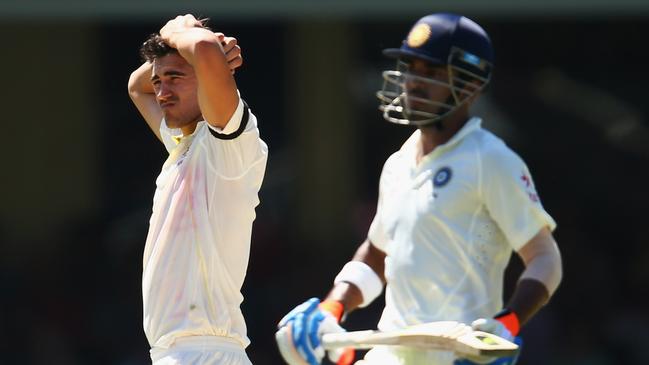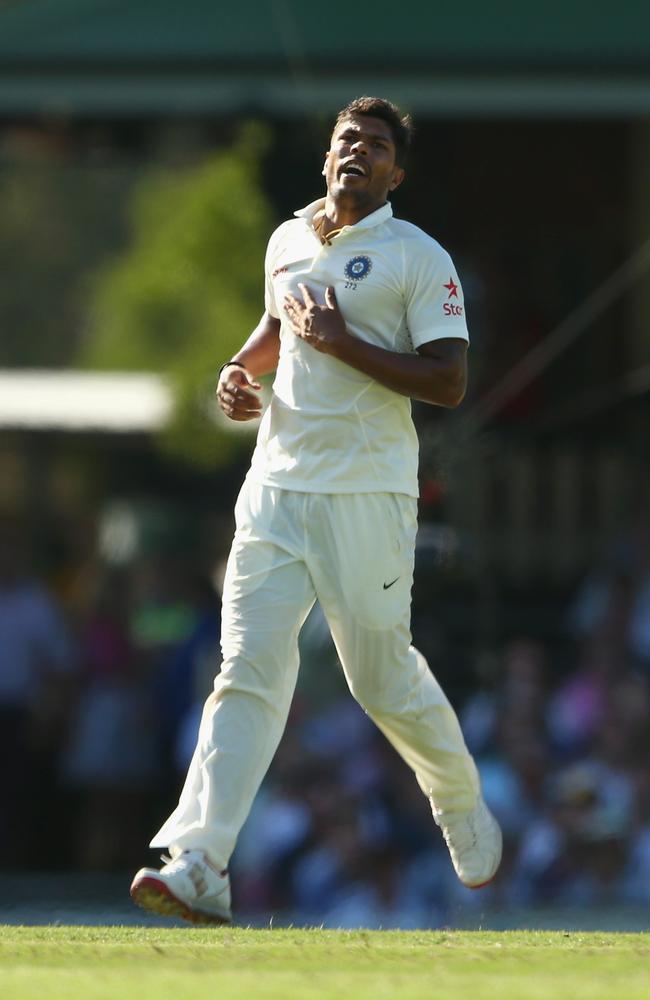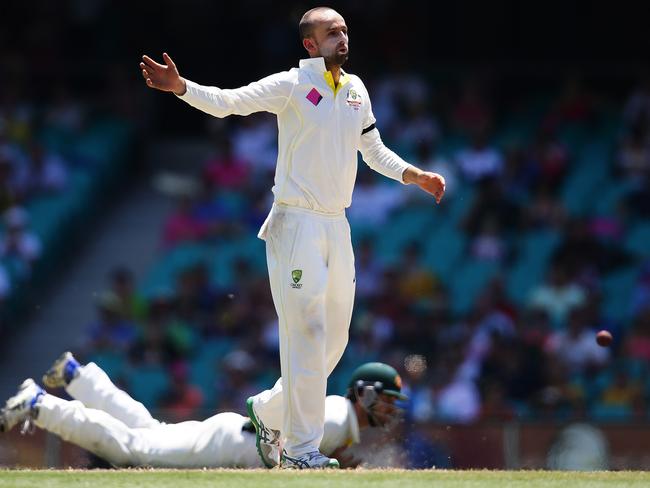Australia v India 2015: Placid SCG pitch leaves players and punters flat, writes Paul Kent
CRICKET Australia must direct all curators to start producing wickets that encourage cricket, on both sides of the ball, and encourage a result.

Opinion
Don't miss out on the headlines from Opinion. Followed categories will be added to My News.
SHANE Warne was taking a break from dating one of his usual lovelies to do some TV commentary on Tuesday.
Warne is so good it’s hard to know what he does better, although fair judges call it a draw, and as he looked down at the SCG pitch Warne found it hard to agree with the common sentiment that it was a good, strong Test pitch.
“There are no gremlins in the pitch whatsoever, it’s so flat,” he said on Channel Nine.
REPORT: LATE HITTING PUTS AUSSIES IN PRIME POSITION
CRICKET CONFIDENTIAL: KOHLI COPS SCG STICK
“I just think it’s been too much in the batsmen’s favour. Everyone says what a great wicket. This is a flat one. It’s just a bit too flat.”
Cover your eyes and Warne could have been talking about Melbourne or even, at a pinch, Adelaide or Brisbane this summer. Four Tests down and the winner of the coin toss chose to bat every time because the decks were flat and a tremendous advantage.

When Australia finally bowled India out yesterday, it was day four and ended just the second innings. Four days, 1047 runs and just 17 wickets, some of which were thrown away in the chase for a result.
Is this the future? Or remnants of a nightmare past?
How long can Test cricket survive if it were to toss up many more summers like this?
Nowadays, we live in an instant world.
Everything is shorter.
Five-day cricket will continue to survive, despite the anomaly of a five-day game in a world where we are constantly searching for shorter forms.
Test cricket spawned 50-over cricket which became Twenty20, and now we finish watching the Test and an hour later are watching the Scorchers and the Heat, or the Sixers and Thunder.
It is all over before bedtime.
And it’s not just cricket.
Tennis is about to introduce Fast 4. There’s Sevens Rugby, the Rugby League Nines, Fast5 netball, short-course swimming, all competing for a quick dollar in a fast-food world.
For years Test cricket had a clear summer to roll through five-day Tests but the Big Bash League and A-League, busier tennis schedules and free-to-air golf all began to cram in their summer and all competing for the same market.
And while Test cricket will continue to bow to tradition and habit, it has become a little bit like the ocean, always changing, always the same.
Scoring rates have quickened, tactics have become more aggressive.
Recently Ed Cowan was interviewed on radio, saying how he has changed his approach to opening the batting after watching David Warner.
Warner bats like he’s in a pub brawl. He’s all offence.
He scores at a run a ball in Test cricket so often that we’ve got used to it. We’re disappointed now when he doesn’t.
Warner put so much early pressure on bowlers, Cowan said, he forced them to change their approach, which forced more loose deliveries and quickened the batsman’s ability to dominate. The trick was getting through the early work.

But when that’s not there, what is left?
It is terrifying to ask.
The Sydney pitch is so passive that when the batting was suddenly removed — as India did in its first innings — it dragged us back to 1958. Slow run rates and endless hours of block and shuffle.
Excuses have been made for this pitch.
SCG ground manager Tom Parker copped a bake when last summer’s Sydney Test was over in three days and some believe he got a little nudge from both Channel Nine (lost ratings) and Cricket Australia (lost gate receipts) to make sure it doesn’t happen again.
That, of course, would never happen.
That India refused to play also contributed. As early as the final session on day two India was playing for a draw.
We know this because they resumed on day three, a batsman’s paradise, and took an hour to score 19 runs while avoiding anything that resembled a stroke.
What Cricket Australia needs to do is direct all its groundskeepers to start producing wickets that encourage cricket, on both sides of the ball, and encourage a result.
Originally published as Australia v India 2015: Placid SCG pitch leaves players and punters flat, writes Paul Kent


